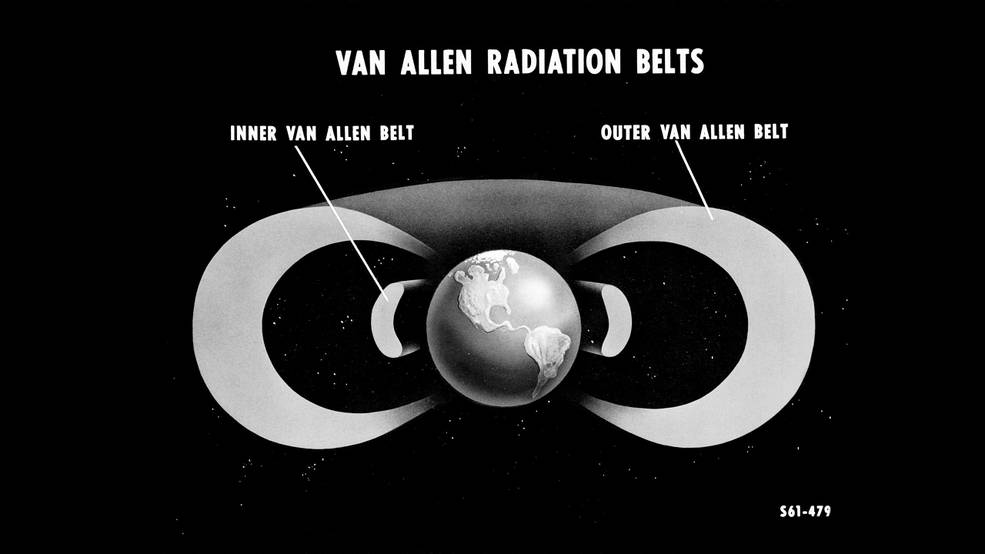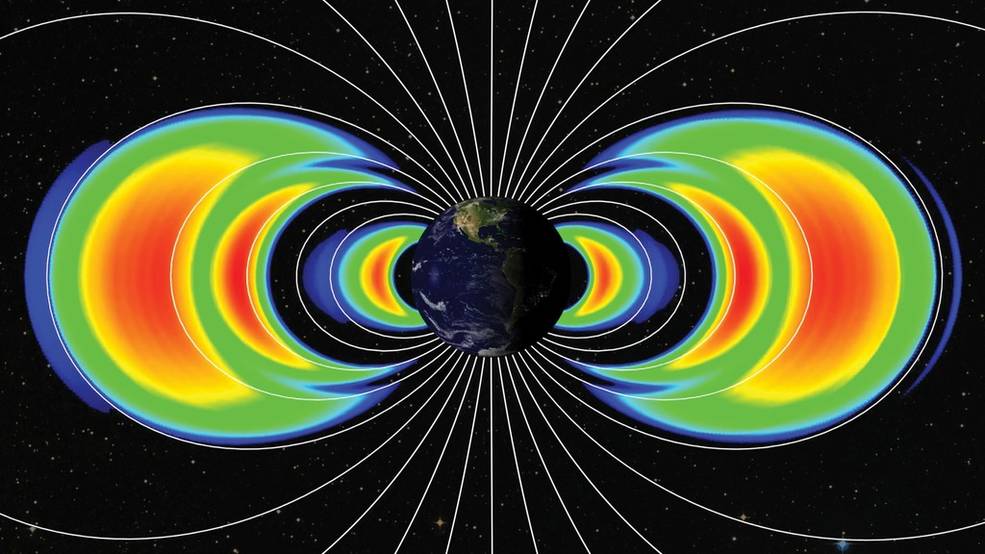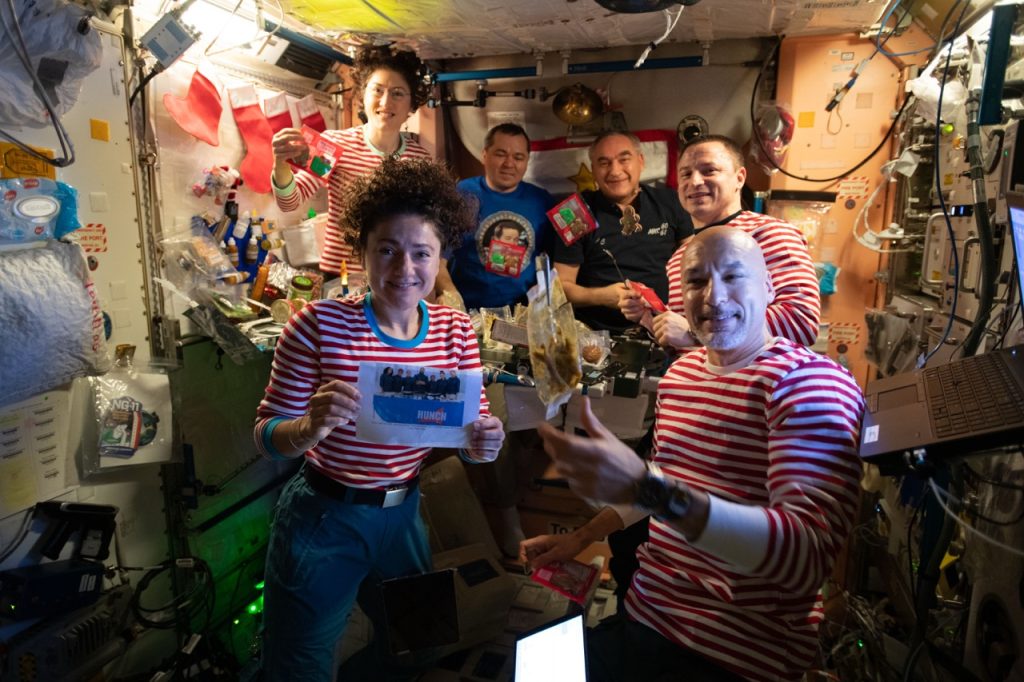

Today we are exploring the Van Allen radiation belts. Find out what they are, when they were discovered, how we study them and more!
What belts does earth wear? Van Allen radiation belts.
Over 60 years ago, the United States launched its first satellite into space: Explorer 1, which included a Geiger counter. To NASA’s surprise, it was registering radiation levels a thousand times greater than anyone expected. The radiation wasn’t of earthly origin, and it occupied an area scientists had considered a void. It also far outpaced the levels of radiation that would be expected from cosmic rays alone. So what was it?
Two donuts of seething radiation called the Van Allen radiation belts.
What are the Van Allen radiation belts?
The Van Allen radiation belt is a zone of energetic charged particles, most of which originate from the solar wind. The particles are captured by and held around a planet by that planet’s magnetic field. It surrounds Earth, containing a nearly impenetrable barrier that prevents the fastest, most energetic electrons from reaching Earth.
The outer belt is made up of billions of high-energy particles that originate from the Sun and become trapped in Earth’s magnetic field, an area known as the magnetosphere. The inner belt results from interactions of cosmic rays with Earth’s atmosphere.
Who discovered these radiation belts?
The Van Allen radiation belts were discovered in 1958 by James A. Van Allen, the American physicist who designed the instruments on board Explorer 1, the first spacecraft launched by the United States. He also led the team of scientists that studied and interpreted the radiation data.
This data captured by the Geiger counter aboard Explorer 1 heralded the emergence of space physics and ushered in a new era of technology and communications.
Prior to launch, scientists expected to measure cosmic rays — high-energy particles primarily originating beyond the solar system — which they had previously studied with ground- and balloon-based instruments. After receiving the data, Van Allen and his team began exploring the newly discovered radiation belts and their cause and effect.


Can you see the Van Allen radiation belt?
Although images of the Van Allen radiation belts make them look visible and colorful, this is actually just a representation. The radiation belts themselves are so dilute that astronauts don’t even see or feel them when they are outside in their spacesuits. In fact, scientists only detect them using sensitive instruments inside satellites and spacecraft.
With the right equipment, though, NASA scientists can hear part of the radiation belt. Using these tools, they discovered that electrons whistle as they work.
Studying the Van Allen radiation belts
Since 1958, scientists have continued to study the Van Allen radiation belts, generating dozens of theories. In 2012, NASA launched the Van Allen Probes to study the region. The Van Allen Probes’ job is to help determine how particles make their way in to the belts, where they disappear to, and what processes accelerates them to such high speeds and energies. The Probes’ instruments measure the signatures of a vast host of processes over a wide range of time scales and locations.
The Van Allen probes survived the extreme radiation for years, sending a plethora of data. One key finding was data showing that the inner edge of the outer belt is highly pronounced. For the fastest, highest-energy electrons, this edge is a sharp boundary that, under normal circumstances, the electrons simply cannot penetrate–hence the impenetrable barrier.
Another important finding was discovering that in addition to humans shaping Earth’s landscape, scientists now know we can shape our near-space environment as well. Very low frequency, or VLF, radio communications have been found to interact with particles in space, affecting how and where they move.
In 2019, the twin Van Allen Probes began their final phase of exploration, and will continue to use their instruments to send data to scientists on earth to study until they run out of fuel and eventually re-enter Earth’s atmosphere after about 15 years.
Why learning more about these radiation belts matters
Located in the inner region of Earth’s magnetosphere, the radiation belts endanger satellites. That’s because solar cells, integrated circuits, and sensors can be damaged by radiation. What does that means for spacecraft?
“Our current technology is ever more susceptible to these accelerated particles because even a single hit from a particle can upset our ever smaller instruments and electronics,” said David Sibeck, Van Allen Probes mission scientist at NASA’s Goddard Space Flight Center in Greenbelt, Maryland. “As technology advances, it’s actually becoming even more pressing to understand and predict our space environment.”
To continue space exploration, understanding the dynamics of the Van Allen radiation belt is essential for protecting technological assets and planning crewed space missions.








